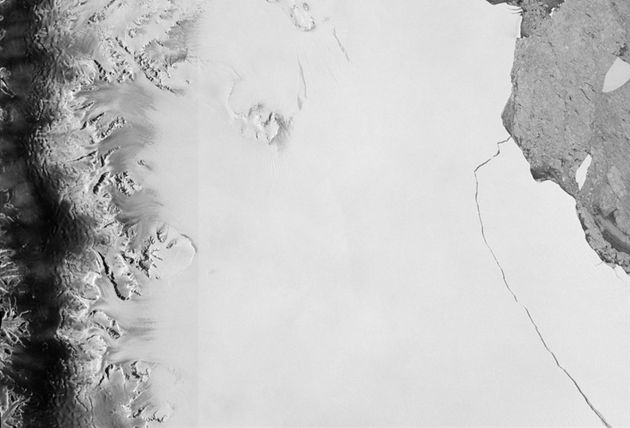Video footage showing the dramatic moment an iceberg the size of Manhattan – some four and a half miles wide – broke free from the Helheim Glacier in Greenland, has been released.
It took just 30 minutes for the giant to break free from the glacier and quickly break up into smaller icebergs, resulting in vast chunks of ice crashing into one another.
The phenomenon, which took place at the end of June, was so large that you can actually see the sea level around it rise as the iceberg fell into the sea.
New York University has condensed the video into just under two minutes so you can experience the moment for yourself.
While calving is a normal part of how glaciers behave, by closely monitoring how they break off into icebergs we can better understand the effects of global warming on the sea levels.
“Global sea-level rise is both undeniable and consequential,” explains David Holland, a professor at NYU’s Courant Institute of Mathematics and NYU Abu Dhabi, who led the research team. “By capturing how it unfolds, we can see, first-hand, its breath-taking significance.”
Despite knowing little about the phenomenon, we do know the impact these events can have on the rest of the planet.
As icebergs are formed they directly contribute to the global sea level, pushing it higher and higher. For example, if the Western Antarctic Ice Sheet were to break off into the sea it would result in a 10ft rise in the global sea level, enough to completely submerge New York City, a 2017 estimate suggested.
While impressive, this Helheim Glacier iceberg has nothing on last year’s record which saw a trillion tonne goliath break away from Antarctica’s Larson C ice shelf.

The iceberg, which had an area of around 3,600 square miles, broke away and is now currently found floating just a few miles away from its original location.
Thankfully it’s not believed that last year’s event was directly related to global warming, however the ice shelf has retreated to its furthest point in living memory.
Dr Martin O’Leary, a Swansea University glaciologist and member of the MIDAS project team, said: “Although this is a natural event, and we’re not aware of any link to human-induced climate change, this puts the ice shelf in a very vulnerable position. This is the furthest back that the ice front has been in recorded history. We’re going to be watching very carefully for signs that the rest of the shelf is becoming unstable.”
As these explosive events become more common scientists will be able to create more accurate models of firstly what’s causing them, and then predict how much worse they’re going to get in the future if we don’t stop climate change.